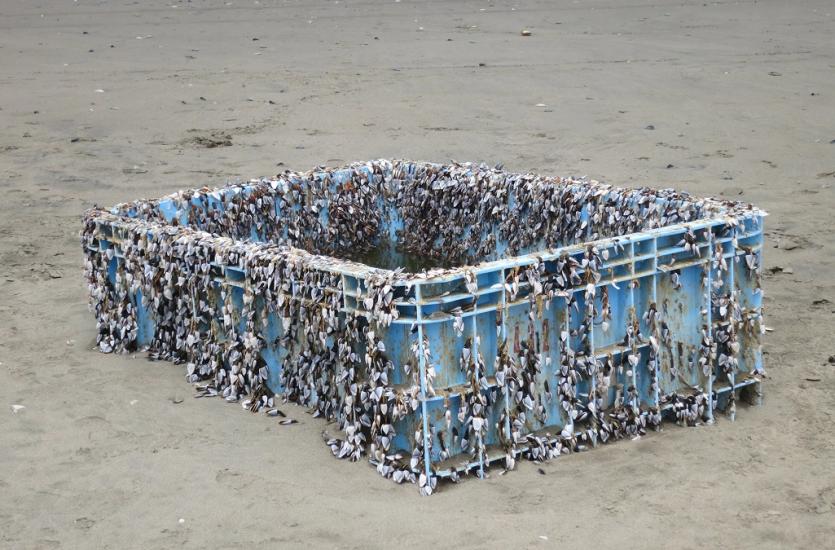Pelagic gooseneck barnacles hang like ropes off a plastic basin that washed onto the beaches of San Francisco in 2014. The basin was one of many pieces of debris that crossed the Pacific after the 2011 Japanese tsunami. Photo:National Geographic
By Patryk Krych | The World Daily | JUNE 14th 2021
One of the largest yet most overlooked issues relating to plastic pollution is beginning to show its colours, that being plastic rafting: when an invasive species hitches a ride on a piece of oceanic plastic and ends up in shores where its presence can have huge ecological impacts.
The idea of rafting, or ‘oceanic dispersal’ as it’s often called, is by no means a new one. It’s happened plenty of times in the past, and in more natural settings, where marine animals have attached themselves to loose pieces of oceanic debris and found themselves travelling thousands of kilometers to new environments, thus causing possible upsets or changes to the ecology.
This usually occurs with free-floating seaweed of stones, and it’s a means for plenty of rafting species to get around – such as seahorses or pipefish, who don’t tend to make very capable swimmers.
“Transoceanic rafting is a fundamental feature of marine evolutionary biogeography and ecology, often invoked to explain the origins of global patterns of species distributions,” said the curator at Steinhardt Museum of Natural History, Tel Aviv University, Professor Bella Galil.
She added that it is fairly rare for any rafting species to survive within a new environment, but what with the surge of plastic pollution hitting the ocean, more and more species are beginning to get into the habit of biofouling – attaching themselves and rafting to where they are not wanted, particularly to plastics or abandoned diving equipment.
Plastic pollution has opened up a pathway for more frequent instances of rafting from more invasive species – leading to threats to biological diversity. In this sense, species that have invasively migrated from one part of the ocean to another may find themselves causing upset to the new area’s general food security, leading to potential endangerment to other local marine life.
According to Galil, this issue can be most prominently noticed in the Mediterranean where there are currently at least 455 alien marine species currently listed – likely having rafted through on pieces of plastic via the Suez Canal from the Red Sea.
Galil added that some of these invasive species tend to be “noxious, poisonous, or venomous and pose clear threats to human health.” Examples of these include the nomad jellyfish and long-spined sea urchins, neither of which are native to the Mediterranean and yet are now causing severe harm to its biodiversity after having migrated from the Indian Ocean.
Following the widening of the Suez Canal after the grounding of the Ever Given earlier in 2021, Galil predicts that this problem may worsen. “Larger canal, larger vessels [will mean] likely larger volume of Red Sea species arriving in the Mediterranean,” she said.






